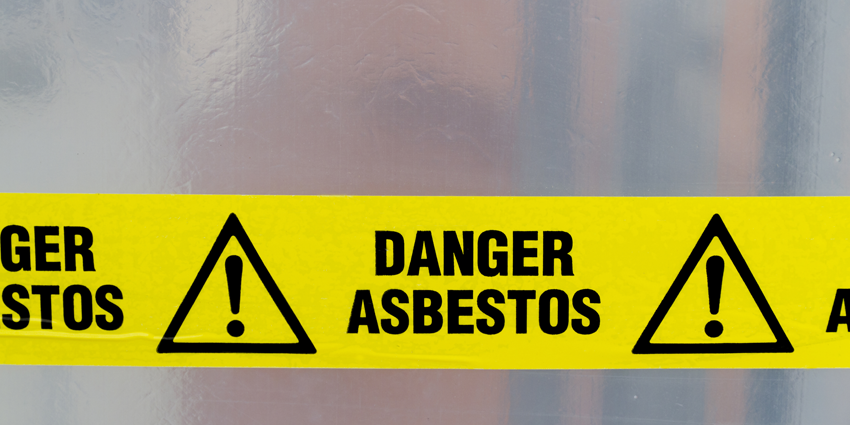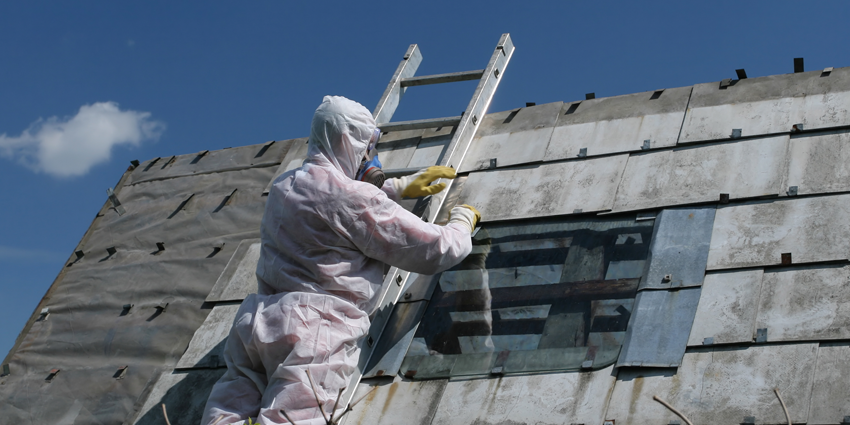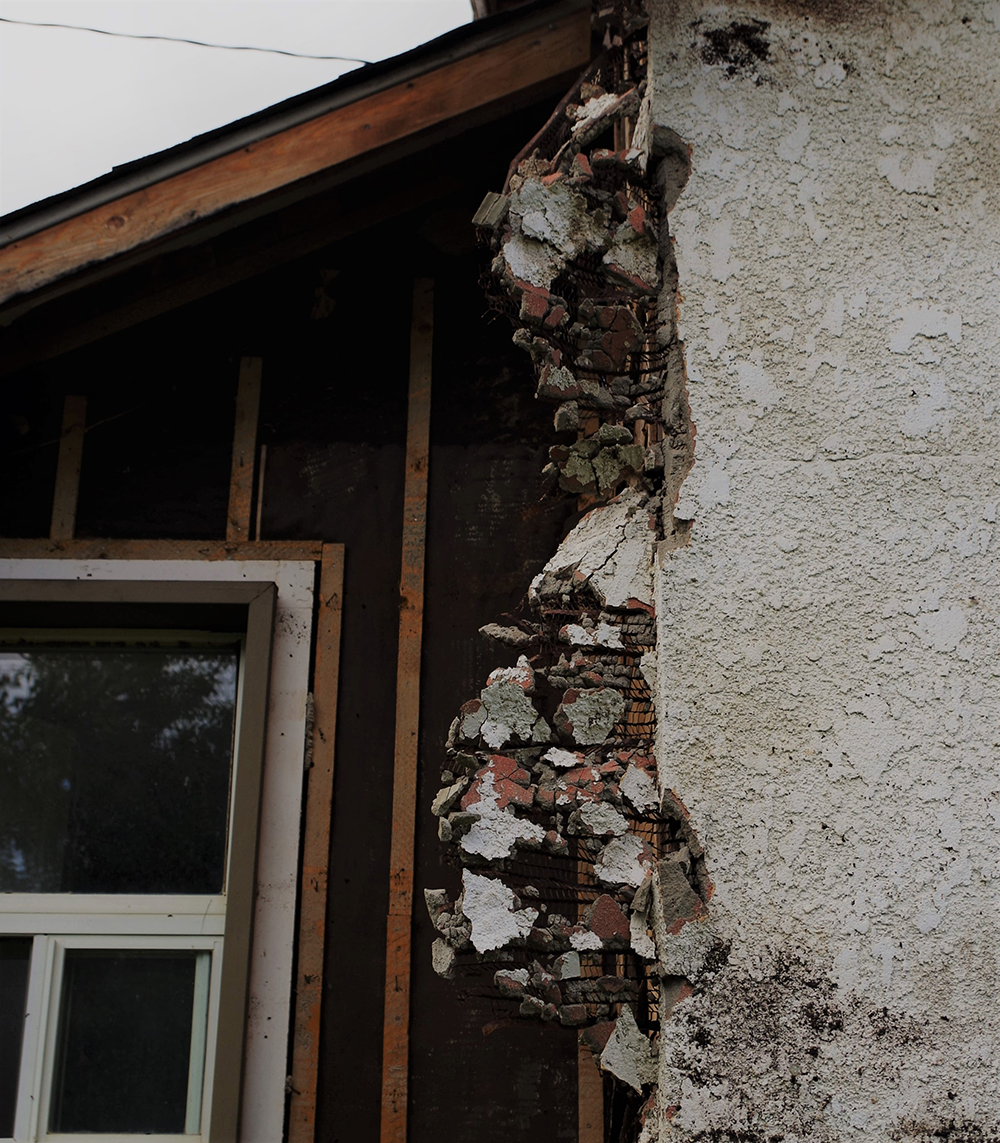Asbestos Removal
Inspection Channel have been providing asbestos abatement services for more than 20 years. We offer a wide range of asbestos abatement and remediation services for commercial, residential, and industrial buildings.
If your home or commercial building has been built before the 1990s, most probably it will contain asbestos.

Asbestos is a naturally occurring mineral that was a popular construction material. It was commonly used in homes, buildings, and schools for various purposes like insulation, in attics, around pipes, ducts/HVAC systems, behind walls, in basements, ceiling tiles, roof shingles, and more. However, lately, it was discovered that asbestos poses serious health risks. If asbestos is disturbed and its fibers are released into the air, it can be extremely hazardous for you and your family. The prolonged asbestos exposure may cause lung cancer, mesothelioma, and Asbestosis, a condition that makes breathing difficult and can lead to pneumonia and heart disease.
Asbestos Abatement
Asbestos abatement must be handled by a licensed and certified hazardous material specialist. Inspection Channel can help with all your asbestos removal needs efficiently and effectively. We are recognized by the Ministry of Training Colleges and Universities.
- We are a fully compliant asbestos removal company that offers safe and effective services.
- Not all asbestos requires removal.
- In some cases where the asbestos is stable and not damaged, it is often best to simply leave it alone.


Why Choose Us For Asbestos Abatement
- Our certified and trained technicians can remove and remediate asbestos from any location.
- We are MTCU Certified 253W & 253S to handle Type 1, Type 2, and Type 3 Asbestos Removal.
- IAC2 Certified – Indoor air consultants
- Certified thermographers
- Professional, experienced, fully insured and covered with the workplace safety and insurance board
Exterior and
Interior Demolition
- We offer demolition services for all commercial, industrial, residential, and construction needs.
- Our professional and courteous staff can assist you with all your demolition needs.
- Our demolition experts ensure the safe dismantling of the structure and the environmentally responsible disposal of the waste.
- Our demolition technique ensures the safety of all team members and everyone present near the site.
- We understand that every demolition project is unique and needs to be properly executed. We take care of every demolition project from start to finish.
Professional, experienced, fully insured and certified.

Asbestos is a naturally occurring fibrous mineral, used as insulation in construction and various construction products. Asbestos was a good insulator of heat, noise, and fireproof. Its popularity was due to the inexpensiveness and abundance. It was popular from the 1950s to 1990s, however, today we know that asbestos is bad for your health and should be removed. Breathing in asbestos fibers can cause cancer and other diseases.
Some of the common uses of asbestos in construction are: spray applied fireproofing, mechanical insulation of boilers, tanks and pipes, linoleum, floor tiles, drywall taping compound, vermiculite, asbestos cement board, and tiles, asbestos cement pipes, textured decorative coating, and house siding.
Often, asbestos was mixed with other materials, making it even harder to detect it.
We use modern equipment to detect asbestos in your home, office, or building. There are two types of asbestos tests: PCM asbestos testing and TEM asbestos testing.
If you work maintaining or doing construction in buildings built before 1990, there are many products which may contain asbestos. Public and commercial building owners should keep an inventory of asbestos-containing materials to inform workers, tenants, authorities, and contractors. Ask your supervisor whether asbestos is present in your work area. If you are unsure, check with a qualified asbestos removal specialist. Some provinces require specific training and steps to be taken before working with asbestos.
People can be exposed to asbestos when renovation or demolition activities are occurring.
Small asbestos fibers can be released into the air when the following materials contain asbestos:
- Disturbing or removing insulation including insulation around hot water pipes and tanks.
- Removing or disturbing roofing shingles and felt or siding.
- Sanding, breaking apart, or scraping vinyl asbestos floor tiles.
Breaking apart soundproofing ceiling tiles. - Sanding or disturbing plaster, including acoustical plaster.
- Sawing, drilling, or smoothing rough edges of materials.
- Sanding or scraping older surface treatments, such as roofing compounds (including tar paper), spackling, sealants, paint, putty, caulking or drywall.
- Replacing some car parts such as brakes or transmission clutches. Check with your parts supplier to find out if any replacement parts contain asbestos.
Any damage to materials containing asbestos should be reported to the appropriate authority, such as your occupational health and safety professional.
If asbestos is found while renovating in the workplace, hire a qualified asbestos removal specialist to dispose of the asbestos materials before beginning any other work. Do not disturb asbestos materials yourself. This action increases the risk of exposure.
- Type I (low risk)
- Type II (medium risk)
- Type III (high risk)
A similar approach is used in the United States by the Occupational Safety and Health Administration (OSHA). Note that the OSHA system uses the reverse order of numbering for the categories – for OSHA, Class I is the most potentially hazardous class of asbestos jobs, while Class IV refers to custodial activities where there is clean up of asbestos-containing waste and debris. Please check the regulations for your jurisdiction for an exact list of which activities are in each class for your area.
Type 1 (low risk) involves:
- Installing or removing ceiling tiles covering an area less than 7.5 square metres.
- Installing or removing other non-friable asbestos containing materials (ACM), and the tiles/material are not being broken, cut, drilled, abraded, ground, sanded or vibrated (e.g., dust is not being generated).
- Breaking, cutting, drilling, abrading, grinding, sanding, or vibrating non-friable ACM if the material is wetted to control the spread of dust or fibres, and the work is done only with non-powered hand-held tools. (e.g., dust is being generated, but easy to control).
- Removing less than 1 m² of drywall in which joint-filling compounds contain asbestos.
Type 2 (medium risk) involves:
- Removing all or part of a false ceiling to get access to a work area, if ACM is likely to be lying on the surface of the false ceiling.
- The removal or disturbance of less than or equal to 1 m² of friable ACM during the repair, alteration, maintenance or demolition of all or part of machinery or equipment or a building, aircraft, locomotive, railway car, vehicle or ship.
- Enclosing friable ACM.
- Applying tape, sealant, etc. to pipe or boiler insulation that is ACM.
- Installing or removing ceiling tiles that are ACM if the tiles cover an area of greater than or equal to 7.5 m² and are installed or removed without being broken, cut, drilled, abraded, ground, sanded or vibrated.
- Breaking, cutting, drilling, abrading, grinding, sanding or vibrating non-friable ACM if the material is not wetted to control the spread of dust or fibres, and the work is done only with non-powered hand-held tools.
- Removing greater than or equal to 1 m² of drywall in which the joint filling compound has ACM.
- Breaking, cutting, drilling, abrading, grinding, sanding, or vibrating non-friable asbestos-containing material if the work is done with power tools attached to dust-collecting devices equipped with high efficiency particulate air (HEPA) filters.
- Removing insulation that is ACM from a pipe, duct, etc. using a glove bag.
- Cleaning or removing filters used in air handling equipment in a building that has sprayed fireproofing that is ACM.
- An operation that is not mentioned above but may expose a worker to asbestos and is not classified as a Type 1 or Type 3 operation.
Type 3 (high risk) involves:
- The removal or disturbance of greater than 1 m² of friable ACM during the repair, alteration, maintenance, or demolition of all/ part of a building, aircraft, ship, vehicle, etc.
- The spray application of a sealant to friable ACM.
- Cleaning or removing air handling equipment, including rigid ducting (excluding filters), in a building that has sprayed fireproofing that is ACM.
- Repairing, altering, or demolishing all or part of a kiln, metallurgical furnace or similar structure that is made in part of refractory materials that are ACMs.
- Breaking, cutting, drilling, abrading, grinding, sanding, or vibrating non-friable ACM, if the work is done with power tools not attached to dust-collecting devices equipped with HEPA filters.
- Repairing, altering, or demolishing all or part of any building in which asbestos is or was used in the manufacture of products.
Adapted from: Designated Substance – Asbestos on Construction Projects and in Buildings and Repair Operations, Ontario Regulation 278/05
